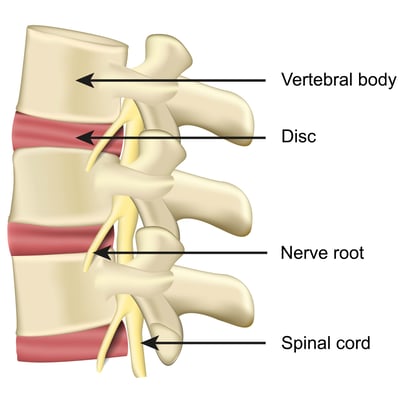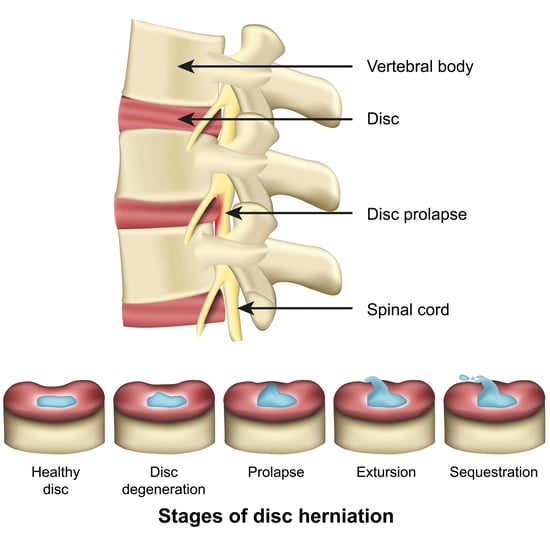Learning About Neurogenic Claudication
Many of us take for granted the ability to walk pain-free.
Neurogenic claudication is a painful syndrome because the nerves of the lumbar spine are compressed. Elite Medical Supply offers back brace solutions to help you take control of this discomfort.
What Are Common Symptoms of Neurogenic Claudication?
This syndrome produces several symptoms primarily while walking or standing upright. Discomfort is often experienced in the legs, buttocks, or hips, including:
- Pain
- Tingling
- Cramping
- Leg weakness, heaviness
Temporary relief from these issues may be found while stooping, sitting, or bending forward at the waist.
What Causes This Problem?
This syndrome is known by some equally intimidating names: neurogenic claudication, intermittent neurogenic claudication, and pseudoclaudication.
In many cases, spinal stenosis is the root cause. The spinal cord stretches down the back from the brain toward the tailbone, and it is protected by a flexible stack of bones called vertebrae.
The spinal cord passes through an opening in the center of each bone in the spinal column, and occasionally narrowing of these openings occurs. Known as stenosis, the narrowing puts pressure on nerves and generates radiating pain.
What Is Spinal Stenosis?
The openings through which the spinal cord passes may narrow due to problems such as:
Excess Bone Growth
Osteoarthritis and other conditions can trigger boney projections to grow. Known as bone spurs, these may protrude into the spinal canal, pressing against nerves, contributing to the narrowing.
Herniated Discs
Discs in the spinal column are comprised of a tough outer shell, the annulus, which protects a gel-like fluid called the nucleus pulposus. Due to aging, wear and tear, or injury, the disc may crack, bulge, or tear, causing the fluid to leak or protrude.
The protrusion from a herniated disc may push against a nerve root or cause inflammation in the region that irritates the nerve. Irritated nerves can cause shooting pains or numbness that radiate from the buttocks and down the legs.
The article Use the Right Back Brace to Manage or Maintain a Herniated Disc is a great place to learn more about this condition.
Ligament Thickening (Hypertrophy)
Dense cords called ligaments hold the spinal cord in proper position. With age and/or injury ligaments may stiffen and enlarge, bulging into the spinal canal and causing a decrease in space.
Injury
A spinal column injury resulting in bone fracture or dislocation can cause spinal narrowing and pressure.
How Can Neurogenic Claudication Be Treated?
Neurogenic Claudication can be treated. Your physician can recommend conservative treatments to help minimize or eliminate pain:
- Use of a back brace
- Physical therapy focusing on forward spine flexion
- Medication
- Spinal epidural steroid injection
If conservative care is ineffective, surgery can be recommended with a primary goal of decompression – removing pressure from spinal nerves. Examples are:
- Discectomy - removal of the damaged portion of a disc in the spinal column
- Laminectomy - removal of the rear portion of a bony vertebra to enlarge the space through which the spinal cord passes
- Bone spur or injured bone removal
Can Elite Medical Supply Help You?
YES!
Elite Medical Supply is a proud Medicare contract supplier of braces designed to help a wide variety of medical problems. Our quality braces work to promote healing and reduce discomfort.
The Elite Air Decompression Lumbar Sacral Orthotic (LSO) back brace is an effective treatment option for neurogenic claudication. Rigid panels work in tandem with the decompression lumbar belt to help separate compressed vertebrae, provide proper lumbar support, and relieve pain.
The Elite Air Decompression LSO features:
- Vertical 2-inch expansion range stretching from 5.1 to 7.9 inches using inflation
- Use of decompression to expand intervertebral disc space, resulting in pain relief
- Unloads weight-bearing pressure on the body from lower back to hip
- Thin and lightweight design to allow positioning beneath clothing
- Harmful movement restriction
- Removable front and back panels to allow flexible recovery therapy options
- Posterior panel provides coverage from the sacrococcygeal junction to the T-9 vertebra
Pain and discomfort from neurogenic claudication can severely impact everyday life. Ask your physician for treatment options, including our Elite Air Decompression LSO back brace. Contact us for more information and answers to your questions.
Written by Elite Medical Supply of NY
Braces and Products Covered by Medicare
Browse ProductsRecent Posts
- Spinal Decompression at Home: What It Is, How It Works, and Whether It’s Right for You
- Manage Osteoarthritis Progression With a Quality Knee Brace
- Product Highlight: Aspen Active™ P-TLSO
- Understanding Radiculopathy: Causes, Symptoms, & Treatment Options
- Alternatives to Back Surgery: What you Should Know
Topics
- Back Braces (39)
- Knee Braces (31)
- Medicare Beneficiaries (31)
- Pain (24)
- Non-Opioid (22)
- Medical Providers (19)
- Lower back pain (11)
- Product Highlight (11)
- Sciatica (11)
- Muscle Spasms (9)
- Decompression (8)
- Lumbago (8)
- Degenerative disc disease (6)
- Lumbar Spinal Stenosis (6)
- Spinal Stenosis (6)
- Working with your doctor (6)
- Fracture healing (5)
- Herniated Nucleus Pulposus (5)
- Bulging or herniated disc (4)
- Quadratus Lumborum Syndrome (4)
- SI Joint (4)
- SI Joint Dysfunction (4)
- Spondylolysis (4)
- Wrist Pain (4)
- Bone Growth Stimulator Therapy (3)
- Bone Growth Stimulators (3)
- Carpal Tunnel Syndrome (3)
- Neuromuscular Electrical Stimulation (NMES) (3)
- Unicompartmental Osteoarthritis (OA) (3)
- Wrist Brace (3)
- wrist tendinitis (3)
- Braces for Golf (2)
- Electrical Stimulation (2)
- Failed Spinal Fusion Syndrome (2)
- Kyphosis (2)
- Lumbar compression fractures (2)
- Radiculopathy (2)
- Spondylolisthesis (2)
- Supine Cervical Traction (2)
- Total Knee Replacement (2)
- Wrist Braces (2)
- Ambulatory Cervical Traction (1)
- Arthritis (1)
- Braces for skiing (1)
- Cervical Traction (1)
- De Quervain Syndrome (1)
- Digital DME Orders (1)
- Knee Brace Accessory (1)
- Knee Suspension Wrap (1)
- Knee brace support for skiing (1)
- Medicare Scam (1)
- Muscle Atrophy (1)
- PCL (1)
- Patellofemoral Pain Syndrome (1)
- TLSO (1)
- Ulnar Tendinitis (1)



